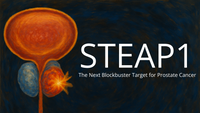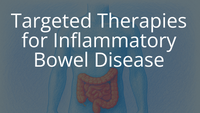DKK1: A Wnt Pathway Regulator
By Mallory Griffin
DKK1 (Dickkopf-related protein 1, or Soggy) is a secreted glycoprotein that contains two conserved cysteine-rich domains CRD-1 and CRD-2 (also known as CYS-1 and CYS -2, respectively), located at the amino-terminus and carboxy-terminus, respectively. CRD-1 is specific to each DKK family member while CRD-2 is highly conserved among all members.

Figure 1. DKK1 structure [1].
DKK1 is mainly secreted by osteoblasts and mature osteocytes, and plays an important role in bone development and bone mass maintenance as well as embryonic head development. DKK1 was initially identified as an inhibitor of the canonical Wnt pathway. It plays a negative regulatory role in the Wnt pathway by binding to cell surface receptors LRP5/6 and Kremen1/2, inhibiting the stability of β-catenin. This affects the differentiation and maturation of osteoblasts, and increases osteoclast production, ultimately leading to the destruction of bone homeostasis. It can be detected in the bone marrow and peripheral blood of patients with multiple myeloma (MM), and it is also highly expressed in patients with MM bone disease (MBD), for which it is expected to be used as a clinical diagnostic indicator.

Figure 2. Signaling pathways involved in DKK1 [2].
DKK1 is also closely related to the occurrence and development of many other diseases. It is highly expressed in esophageal cancer, cholangiocarcinoma, liver cancer and pancreatic cancer, and is low in renal cell carcinoma. However, expression varies in gastric cancer. This may be related to the source of tumor histology, and as a glycoprotein, the change of function due to secondary modification. In addition, the property of DKK1 that inhibits osteogenesis and promotes osteolysis, also facilitates tumor metastasis.
A special feature of DKK1 is that it can not only inhibit the canonical Wnt pathway, but also activate the non-canonical Wnt pathway associated with tumors. DKK1 can bind to the receptor CKAP4 to activate the PI3K-Akt signaling pathway. Moreover, when DKK1 binds to CKAP4 and LRP6 through CRD1 and CRD2 at the same time, the binding to LRP6 can promote the DKK1-dependent DKK1-CKAP4 activation pathway [1]. This promotes cancer cell proliferation. In addition, DKK1 can promote the formation of a tumor immunosuppressive microenvironment, help tumors recruit myeloid-derived suppressor cells (MDSCs) [3], weaken the ability of immune cells to respond to tumor cells [4], and participate in tumor immune escape.
Drugs targeting DKK1
Most of the DKK1-targeting drugs currently in clinical use are antibody drugs. DKN-01, a leading candidate, is a humanized monoclonal antibody developed by Leap Therapeutics, which can bind to DKK1 and block its activity, reduce angiogenesis, and at the same time up-regulate the levels of key cytokines such as IFNγ and IL-15, and promote the death of tumor cells. It can also reprogram MDSCs and reduce their immunosuppressive activity by activating the Wnt signaling pathway. DKN-01 has advanced to clinical phase II for digestive system diseases.
It is worth mentioning that most of the drugs targeting the Wnt pathway have some bone toxicity due to the involvement of the pathway in bone tissue development, but no bone toxicity was found with DKN-01 alone. Notably, it performs even better in patients with Wnt activating mutations and remains a promising drug. In January 2021, BeiGene introduced the development and commercialization rights of DKN-01 in the Asia-Pacific region excluding Japan, and conducted joint research on DKN-01 and its own PD-1 antibody tislelizumab.

In addition to antibody drugs, there are also other forms of DKK1 drugs. DKK1-derived long peptides contain multiple epitopes which can be recognized by immune cells such as T cells and B cells to activate immune responses [6]. There is also a tumor vaccine targeting DKK1, the Dendritic Cell DKK1 Vaccine, developed by the Case Comprehensive Cancer Center [7]. Of course, the role of DKK1 varies by tumor type, and discovery of additional mechanisms of action will provide more opportunities for drug development.
Summary
DKK1 participates in the regulation of the Wnt pathway through various receptors, and plays an important role in multiple tumor types. It is a relatively competitive target at present, especially for digestive system diseases, bone diseases, and autoimmune diseases. In order to facilitate the development of DKK1-related drugs, KACTUS provides high-quality recombinant DKK1 and its receptors, LRP5/6, CKAP4 and Kremen1/2 proteins, covering multiple species and labels, all with strict quality control verification.
Example Product Data

Figure 4. Dose-response curve showing immobilized human DKK1, His tag at 5μg/mL (100μL/well) on the plate can bind human LRP-5, mFc tag with an EC50 of 0.20μg/mL determined by ELISA.

Figure 5. Dose-response curve showing immobilized human LRP-6, mFc tag at 5μg/mL (100μl/well) on the plate can bind biotinylated human DKK1 C terminal domain, hFc Tag with an EC50 of 0.85ug/mL determined by ELISA.
KACTUS Products
|
|
|
|
Human LRP-5, mFc Tag |
|
|
|
|
|
|
|
|
|
|
|
|
|
|
|
|
|
|
References
[1] Kikuchi A, Matsumoto S, Sada R. Dickkopf signaling, beyond Wnt-mediated biology. Semin Cell Dev Biol. 2022 May;125:55-65.
[2] Jiang H, Zhang Z, Yu Y, Chu HY, Yu S, Yao S, Zhang G, Zhang BT. Drug Discovery of DKK1 Inhibitors. Front Pharmacol. 2022 Mar 9;13:847387.
[3] D'Amico L, Mahajan S, Capietto AH, Yang Z, Zamani A, Ricci B, Bumpass DB, Meyer M, Su X, Wang-Gillam A, Weilbaecher K, Stewart SA, DeNardo DG, Faccio R. Dickkopf-related protein 1 (Dkk1) regulates the accumulation and function of myeloid derived suppressor cells in cancer. J Exp Med. 2016 May 2;213(5):827-40.
[4] Malladi S, Macalinao DG, Jin X, He L, Basnet H, Zou Y, de Stanchina E, Massagué J. Metastatic Latency and Immune Evasion through Autocrine Inhibition of WNT. Cell. 2016 Mar 24;165(1):45-60.
[5] https://www.leaptx.com/
[6] Li R, Zheng C, Wang Q, Bi E, Yang M, Hou J, Fu W, Yi Q, Qian J. Identification of an immunogenic DKK1 long peptide for immunotherapy of human multiple myeloma. Haematologica. 2021 Mar 1;106(3):838-846.
[7] https://clinicaltrials.gov/ct2/show/NCT03591614

















